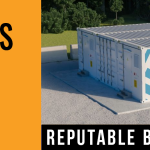 Lithium-ion batteries are still king in the energy storage market, but their shortcomings are holding back the transition to electric vehicles. One main problem is cost. Li-ion battery packs are expensive, and they push up the price of an EV. Their function as an energy storage unit also means they take up a lot of space, and their weight is a drag on efficiency.
Lithium-ion batteries are still king in the energy storage market, but their shortcomings are holding back the transition to electric vehicles. One main problem is cost. Li-ion battery packs are expensive, and they push up the price of an EV. Their function as an energy storage unit also means they take up a lot of space, and their weight is a drag on efficiency.
The good news is that Li-ion batteries are constantly being improved. In one of the latest developments, a Columbia Engineering researcher tweaked the manufacturing process with the common plastic PMMA. The result is a 10 to 30 percent jump in energy density, which translates into a smaller, lighter and less expensive energy storage product.
The Li-ion energy storage hiccup
The new development zeroes-in on a hiccup that results from the conventional Li-ion manufacturing process. The problem comes up after the battery is completed, when it is charged for the very first time.
As described by Columbia researchers, part of the electrolyte transitions from a liquid to a solid during the first charge, and that solid adheres onto one of the electrodes. That transition can reduce the energy of a Li-ion battery from 5 to 20 percent. That lowers the capacity of the battery and can interfere with its lifespan, too.
(For those of you new to the topic, the electrodes are the parts of the battery that receive and discharge an electrical current. The electrolyte is the part that stores the charge.)
The numbers are even higher for more sophisticated, high-efficiency Li-ion batteries:
“The loss is approximately 10 percent for state-of-the-art negative electrodes, but can reach as high as 20 to 30 percent for next-generation negative electrodes with high capacity, such as silicon, because these materials have large volume expansion and high surface area.”
One way to work around the problem is to add lithium-saturated materials during the manufacturing process, to counterbalance the lithium “lost” during the first charge.





